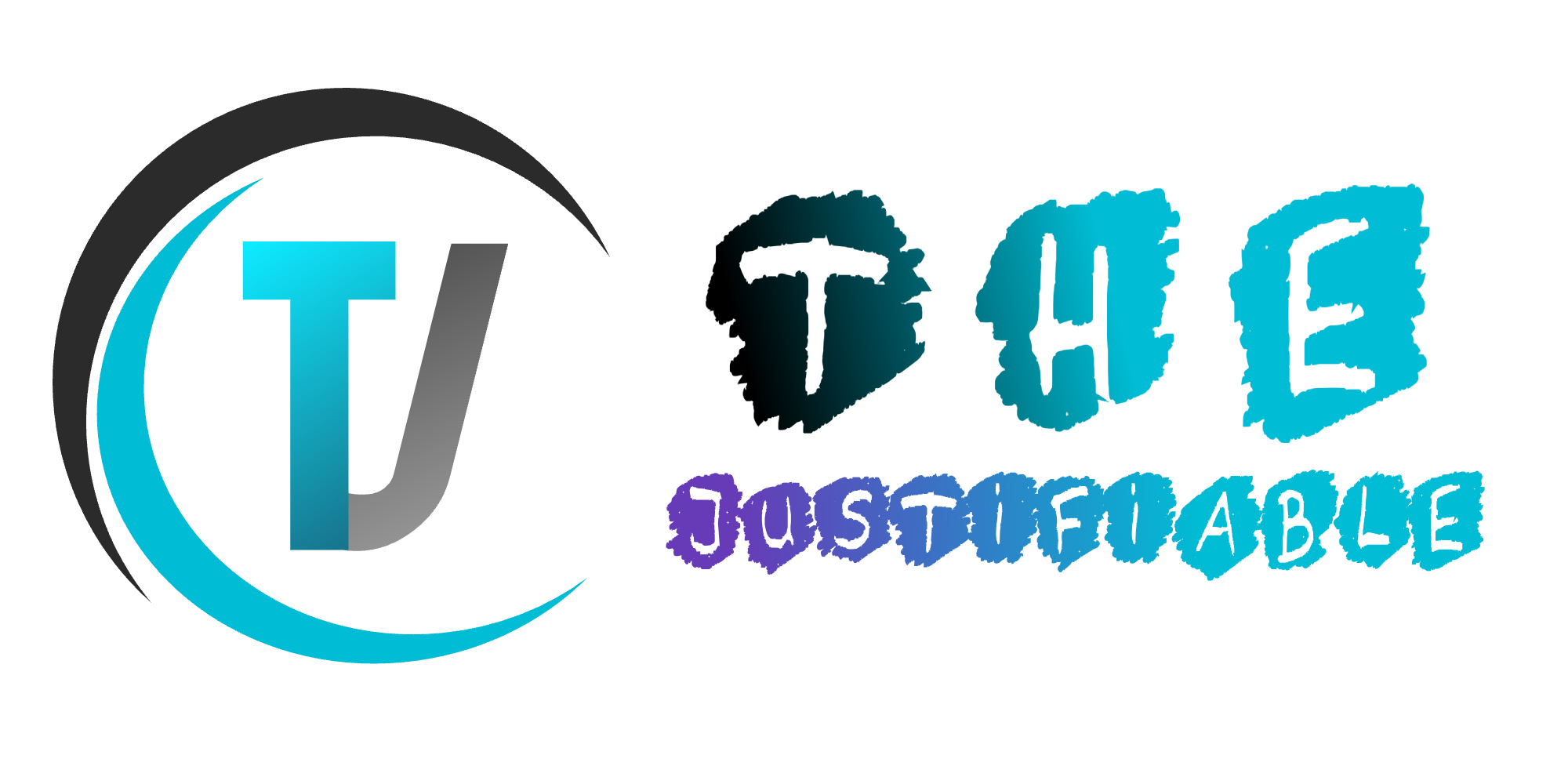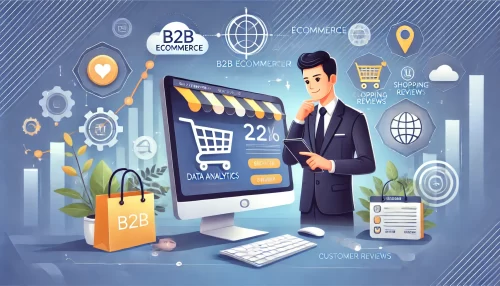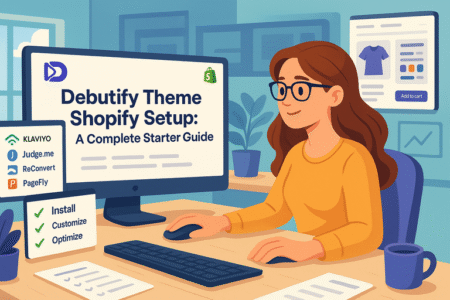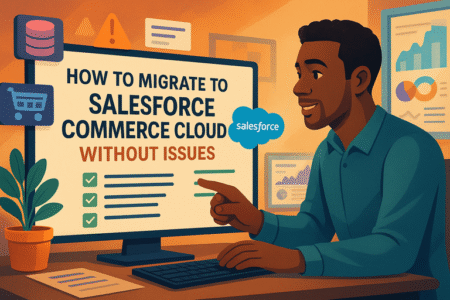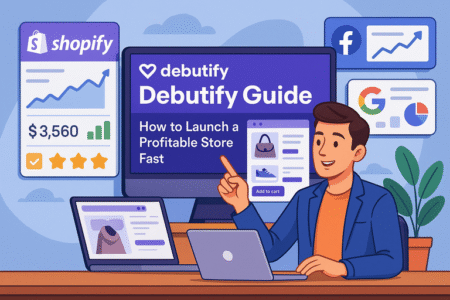Table of Contents
Looking for dropshipping strategies that actually lead to real growth—not just more busywork? You’re not alone.
What products should you sell to stay profitable long term? How do you stand out in a saturated market? And is it really possible to scale without burning out or spending a fortune on ads?
This guide breaks down seven proven tactics that successful dropshippers use to grow fast, stay lean, and build sustainable online businesses. Whether you’re just starting out or trying to level up, these strategies will help you focus on what actually moves the needle. Let’s dive in.
1. Choose High-Margin, Evergreen Products to Maximize Profit
Choosing the right products isn’t just about what’s trending—it’s about sustainability and solid profit margins. Evergreen products in niche markets tend to bring consistent returns and build customer trust over time.

Identify Reliable Suppliers for Long-Term Success
Your profit strategy starts with who you partner with. A solid supplier will impact everything—delivery times, product quality, returns, and even reviews. I suggest sticking to suppliers who:
- Offer consistent product availability.
- Are responsive and speak your language fluently.
- Have real reviews from other store owners.
- Let you test small batches before going all in.
Platforms like AliDropship, CJ Dropshipping, and Zendrop allow you to vet suppliers with filters for shipping speed, buyer feedback, and MOQ options. But always place a test order to check quality firsthand.
Research Product Demand Using Google Trends and TikTok
You can’t sell what people don’t want. I’ve found the easiest way to validate product demand is through Google Trends and TikTok Search.
- On Google Trends, compare product keywords over a 12-month view. If it’s stable or climbing, that’s a great sign.
- On TikTok, search your product name and filter by “this month” to see if people are talking about it.
If you see unboxing videos, organic shoutouts, or tutorial content for a specific product category, you’re onto something with viral potential.
Avoid Commoditized Items With Thin Margins
Generic products like phone cases, basic jewelry, or LED strips get crushed by competition. The margins are razor-thin, and there’s almost no room to stand out unless you build a full brand.
Here’s how to spot a commoditized product:
- Hundreds of identical listings across multiple platforms.
- No clear differentiation or USP (unique selling proposition).
- Competing solely on price.
Instead, aim for something that solves a problem or fills a niche, like posture-correcting apparel or eco-friendly kitchen tools.
Validate Profit Margins With Real Shipping and Ad Costs
Your product might seem profitable until you factor in $4 shipping, $15 ad spend, and payment processing fees. I use a simple formula:
Profit = Selling Price – (Product Cost + Shipping + Ads + Fees)
Let me break it down with a quick example:
- Product cost: $8
- Shipping: $4
- Ad spend (average per purchase): $12
- Fees: $2
- Selling price: $34
- Net profit: $8 per sale
If your margin is under $10, scaling will feel like a treadmill. Use tools like Shopify Profit Calc or BeProfit to stay on top of real numbers as you test.
2. Optimize Your Product Pages for High Conversions
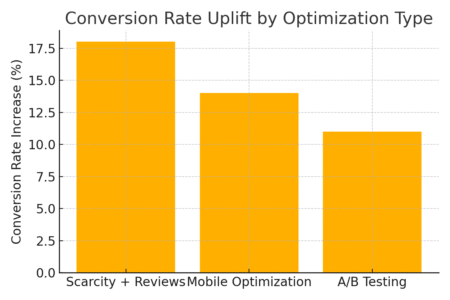
Once someone lands on your store, your product page has one job—convince them to buy. A small tweak here can seriously move your conversion rate up by 1–3% or more.
Use Benefit-Driven Copy and Strategic Formatting
People don’t buy features—they buy outcomes. Instead of writing “Made from stainless steel,” say “Rust-proof design for long-term use.”
Use formatting tricks like:
- Short bullet points to summarize benefits.
- Emojis to break up walls of text.
- Headings like “Why You’ll Love It” instead of “Product Description.”
Always lead with how the product helps the customer’s life, not what it’s made of.
Add Scarcity and Social Proof With Real Reviews
Scarcity creates urgency. I’ve used countdown timers and stock indicators to boost FOMO, but nothing beats authentic customer reviews.
Here’s what works:
- Show star ratings right under the product title.
- Include photo reviews from real customers.
- Use tools like Loox or Judge.me to import and automate this.
Social proof is powerful, especially if it includes videos or mentions in influencer content. People trust other buyers more than they trust you.
A/B Test Product Images and Descriptions Regularly
You might love your product photo, but the market will tell you what works. I recommend running A/B tests using tools like Shopify’s native testing tools.
Try testing:
- Lifestyle vs. studio product images.
- Long-form vs. short-form product descriptions.
- Price placements above the fold vs. below the CTA.
Even something as small as changing the CTA from “Buy Now” to “Get Yours Today” can increase your CTR.
Focus on Mobile Optimization for Fast Loading Speeds
More than 70% of ecommerce traffic happens on mobile—and slow pages kill conversions. If your product page takes longer than 3 seconds to load, you’re losing buyers.
Here’s how to keep your page lean:
- Compress image files using EWWW.io or Shopify’s built-in optimizer.
- Avoid heavy apps or unnecessary popups.
- Use themes designed for speed, like Debutify.
A clean mobile experience that loads quickly, has clear CTAs, and easy checkout flow can instantly bump your conversions.
3. Leverage TikTok Organic to Build Instant Traffic
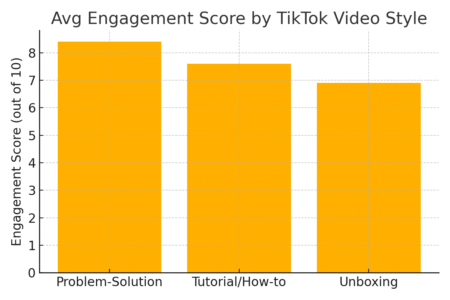
TikTok isn’t just for dancing teens anymore—it’s a goldmine for dropshipping traffic when used the right way. Organic content can explode overnight without spending a dollar on ads.
Create Native-Looking UGC-Style Product Videos
User-generated content, or UGC-style videos, blend in naturally with what people already scroll through. These don’t feel like ads—they feel like recommendations.
Here’s how to make them work:
- Record vertically using your phone for an authentic feel.
- Show the product in action with a simple storyline: problem → product → result.
- Add human elements like unboxings, reactions, or simple “TikTok voiceover” trends.
If you’re not comfortable on camera, use services like Billo or Influee to get UGC created for you.
Use Trending Sounds and Hashtags to Go Viral
The TikTok algorithm favors fresh, trending content. You don’t need a huge following to go viral—just the right sound and story.
To boost reach:
- Scroll your “For You” page for trending sounds, then save them to use later.
- Combine product features with top hashtags like #tiktokmademebuyit or niche-specific tags.
- Keep it under 30 seconds and deliver value fast—watch time is everything.
You’re not just selling a product, you’re joining a culture moment. That’s what spreads.
Post 3–5 Times Daily During Product Testing Phase
Volume matters. You won’t know what hits until something takes off—and most people give up too early.
A solid posting schedule:
- Post 3–5 videos daily for the first 7–10 days when testing a new product.
- Vary your angles: one could be a tutorial, one a problem-solution, one a skit or trend.
- Don’t delete underperforming content; TikTok can resurface it weeks later.
This strategy helped brands like Tru Earth and BlendJet go viral with zero initial ad spend.
Analyze Watch Time and Engagement to Refine Content
Once you’re posting consistently, the next step is watching how people respond. The TikTok Creator Tools dashboard gives you access to data like:
- Average watch time
- Percentage watched
- Shares, likes, and comments
Focus on videos that have over 70% average watch time and replicate their structure. If people aren’t sticking around past the first 3 seconds, try changing your hook or caption style.
Think of TikTok like a live feedback loop. The more you learn, the sharper your dropshipping strategies become.
4. Test Multiple Creatives With Paid Facebook & TikTok Ads
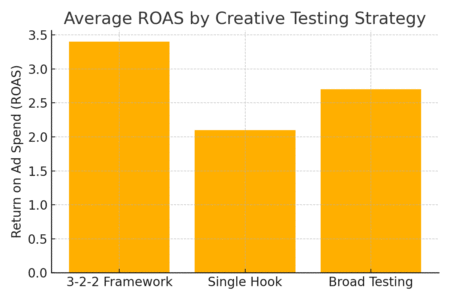
Paid ads are still one of the fastest ways to scale your dropshipping store—but only if you approach testing strategically. Creativity is your weapon, data is your guide.
Launch Broad Interest Ad Sets With Various Hooks
Instead of laser-targeting early, let the platforms find your audience for you. Broad targeting combined with multiple hooks often performs better at scale.
Here’s what to test:
- Different video openings (e.g., “Stop scrolling” vs. “If you struggle with…”)
- Storytelling vs. fast-paced visuals
- Caption variations and CTA positions
Use platforms like TikTok Ads Manager or Meta Business Suite to create ad sets with wide demographics. Let the algorithm work in your favor once it finds converting segments.
Use Creative Testing Frameworks (e.g., 3-2-2 Method)
One of the most effective frameworks I’ve seen is the 3-2-2 Method:
- 3 different hooks
- 2 different bodies
- 2 different CTAs
This gives you 12 ad variations from just a few core components. It’s scalable, measurable, and easy to duplicate with new products.
As the chart shows above, this method tends to outperform others by a large margin in terms of ROAS.
Rotate Winning Creatives Into Conversion Campaigns
Once you’ve found a few ad sets that consistently convert, duplicate those creatives into fresh campaigns. Keep the structure but test new copy or visuals around the same concept.
Here’s how to keep it optimized:
- Pause creatives with low CTR or high CPA.
- Duplicate top performers into CBO (campaign budget optimization) campaigns.
- Reuse high-performing hooks with different product angles.
Even a great ad can fatigue. Rotating new variations keeps results strong over time.
Scale Efficiently by Monitoring ROAS and CPM Trends
Scaling too early—or blindly—can kill your margins. Watch your metrics daily, especially:
- ROAS (Return on Ad Spend): Should stay above 2.5 before scaling.
- CPM (Cost per 1,000 impressions): Spikes can indicate market saturation or weak creatives.
- CTR (Click-through rate): Under 1% usually means your ad isn’t grabbing attention.
If things dip, don’t panic. Pause, review, and refine. Every winning campaign starts with a dozen test failures.
5. Implement One Product Store Funnels for Simplicity
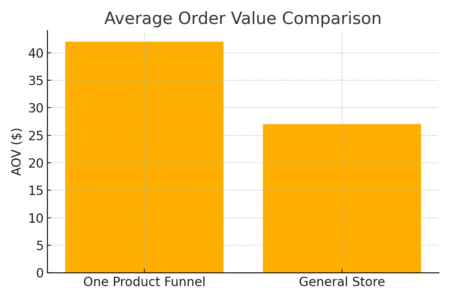
When you’re trying to grow fast, less really is more. One product stores help you focus all your energy—and your visitor’s attention—on selling just one offer, without any distractions.
Design a Funnel That Removes All Buyer Distractions
Clutter kills conversions. Your goal is to guide the customer from curiosity to checkout without giving them a reason to hesitate or wander.
A good one-product funnel looks like this:
- A clean landing page focused solely on your product.
- A direct problem-solution headline above the fold.
- No navigation bar, exit links, or unrelated products.
Tools like Zipify Pages or GemPages can help you build clean, distraction-free sales funnels right inside Shopify.
Focus on a Single CTA From Homepage to Checkout
Every page should answer one question: what action should the visitor take next? A single CTA, like “Buy Now” or “Get Yours Today,” repeated consistently, simplifies the user journey.
Make sure your CTA is:
- Visible above the fold on every device.
- Repeated at key scroll points.
- Paired with benefits or urgency messaging.
Simplicity builds momentum. Fewer choices often mean more conversions.
Use Post-Purchase Upsells and Quantity Breaks
Just because your store sells one product doesn’t mean your average order value has to stay small.
Here’s how to boost it:
- Offer a discounted second unit after checkout.
- Include a post-purchase one-click upsell (apps like OneClickUpsell do this well).
- Add quantity break pricing like “Buy 2, Save 15%” right on the product page.
This approach works especially well with consumables or impulse-buy products.
Highlight a Single Problem-Solving Product Benefit
Instead of listing features, zero in on one key benefit that solves a real pain point. Whether it’s convenience, confidence, or savings—make that benefit the hero.
If you’re selling a back-stretching device, your headline shouldn’t be “Ergonomic Plastic Curve.” It should be something like, “Relieve Back Pain in 10 Minutes a Day—From Home.”
That message will carry through your ad, product page, and email follow-ups for maximum consistency.
6. Automate Operations to Free Up Time for Scaling
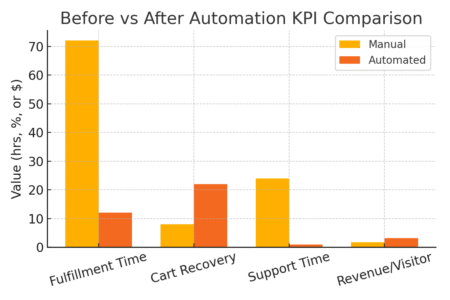
You can’t scale chaos. Once your sales pick up, every manual task becomes a bottleneck. Smart automation clears your schedule so you can focus on growth, not grunt work.
Use Apps for Order Fulfillment and Tracking (e.g., DSers)
Manually placing orders and copying tracking numbers is a nightmare at scale. I suggest integrating tools like DSers, AutoDS, or Spocket to handle:
- Auto-ordering and syncing with AliExpress or other suppliers.
- Real-time order tracking and fulfillment status.
- Bulk order processing.
This alone can save hours a week and reduce human error dramatically.
Set Up Automated Abandoned Cart Emails and SMS
Most carts are abandoned—but not forever. Automated recovery sequences can bring a surprising number of those customers back.
For best results:
- Send the first reminder 1–2 hours after abandonment.
- Use a follow-up SMS within 24 hours.
- Add urgency with time-limited offers or scarcity language.
Apps like Omnisend and SMSBump make this easy to set up and manage with almost no ongoing effort.
Streamline Customer Service With Chatbots or Helpdesks
Quick replies lead to more trust and higher conversion rates. Instead of hiring a full-time support rep, try:
- Pre-programmed chatbots for common questions.
- Helpdesk platforms like Gorgias or Tidio to centralize messages.
- FAQ pages and self-service tools to handle the basics.
This approach can drop your response time from 24 hours to 1 hour—or even instant replies in some cases, as shown in the chart above.
Monitor KPIs With Analytics Dashboards (e.g., Lifetimely)
To grow confidently, you need to know your numbers. Set up a dashboard that updates automatically with key metrics like:
- Net profit per order
- Customer acquisition cost (CAC)
- Average order value (AOV)
- Lifetime value (LTV)
Lifetimely, BeProfit, and Triple Whale are all strong options. When you can see what’s working in real time, it’s much easier to scale wisely without burning out.
7. Build a Long-Term Brand, Not Just a Quick Store

Quick wins are exciting, but long-term success comes from brand equity. A real brand builds trust, loyalty, and higher margins—giving you staying power in a competitive space.
Register a Domain That Reflects Your Niche and Values
Start with your name. A .com domain that feels authentic to your niche gives your store legitimacy. Try to avoid gimmicky or overly general names.
Tools like Namecheap and Lean Domain Search help you find available names quickly. Aim for something:
- Easy to spell and remember
- Emotionally resonant with your audience
- Flexible enough to allow for product expansion later
Think BlendJet, not “PortableBlender4U.”
Build Email Lists With Popups and Lead Magnets
Don’t rely only on ads. Email is your asset—and building that list early means more profit later.
Here’s what I recommend:
- Use exit-intent popups offering a discount or free guide.
- Capture emails before checkout using one-click opt-ins.
- Create a welcome series that introduces your brand story and bestsellers.
Aweber, and MailerLite are great for this. Over time, email can drive 25–35% of revenue for well-run stores.
Focus on Quality Packaging and Unboxing Experience
You can’t control the delivery guy—but you can make the unboxing feel special. This is what people remember (and post online).
Invest in:
- Branded boxes or mailers
- Insert cards with a thank-you note and discount for next order
- Consistent color, font, and tone across packaging
Even small touches like a sticker or QR code to a welcome video add perceived value.
Reinforce Brand Story Across Every Touchpoint
Your brand story is what makes people care—and it should echo in everything from product descriptions to email headers.
To build emotional connection:
- Share your mission on the About page.
- Keep tone consistent in emails, ads, and packaging.
- Show behind-the-scenes content on social media.
People don’t just buy products—they buy meaning. Your brand story helps turn one-time buyers into loyal fans.

